
Gioia Sawaya
What Would Nature Do?
Gioia Sawaya | 15 Apr, 2020


Architecture
“Natural organisms have managed to do everything we want to do without guzzling fossil fuel, polluting the planet or mortgaging their future.” Janine Benyus. Creative by need, nature has handled many of the issues faced by humans today in an effective manner. Animals, plants, and microorganisms have figured-out what is suitable, appropriate, and above all, durable here on Earth. Not only did these organisms manage to develop astonishing abilities such as self-recuperation, ecological adaptation, resilience, resistance, hydrophobicity, assembly, and sun-based vitality among many others, they have also inspired man to do the same. Inspiration can come from pretty much anything, but if one looks back at the way living beings have evolved, it is often seen that nature got there first. Today, thanks to these natural organisms, a new potential has risen in a modern form. Known as “Biomimicry” (originally from the Greek words “bios” meaning life and “mimesis” meaning to copy or to emulate), this discipline asks man to seek inspiration from nature by looking at the ways natural organisms and ecosystems overcome adversity. It invites human beings to gain from nature’s best ideas, and translate them into designs that solve their human problems. If biomimicry had to be defined, the purest definition would comprise three phases, interdependent on each other, yet not necessarily interconnected: First, seeing a problem, second, seeking a parallel of it in nature, and third, looking back at nature for a solution. Biomimicry is to ask, when facing a problem, the simple question: What would nature do? Consequently, biomimicry can take place on three levels: the organism’s level, the behavioral level, and the ecosystem level. Thus, its types include: Mimicking form (What is the design?), mimicking process (How is it made?), and mimicking ecosystems (How does it fit?)
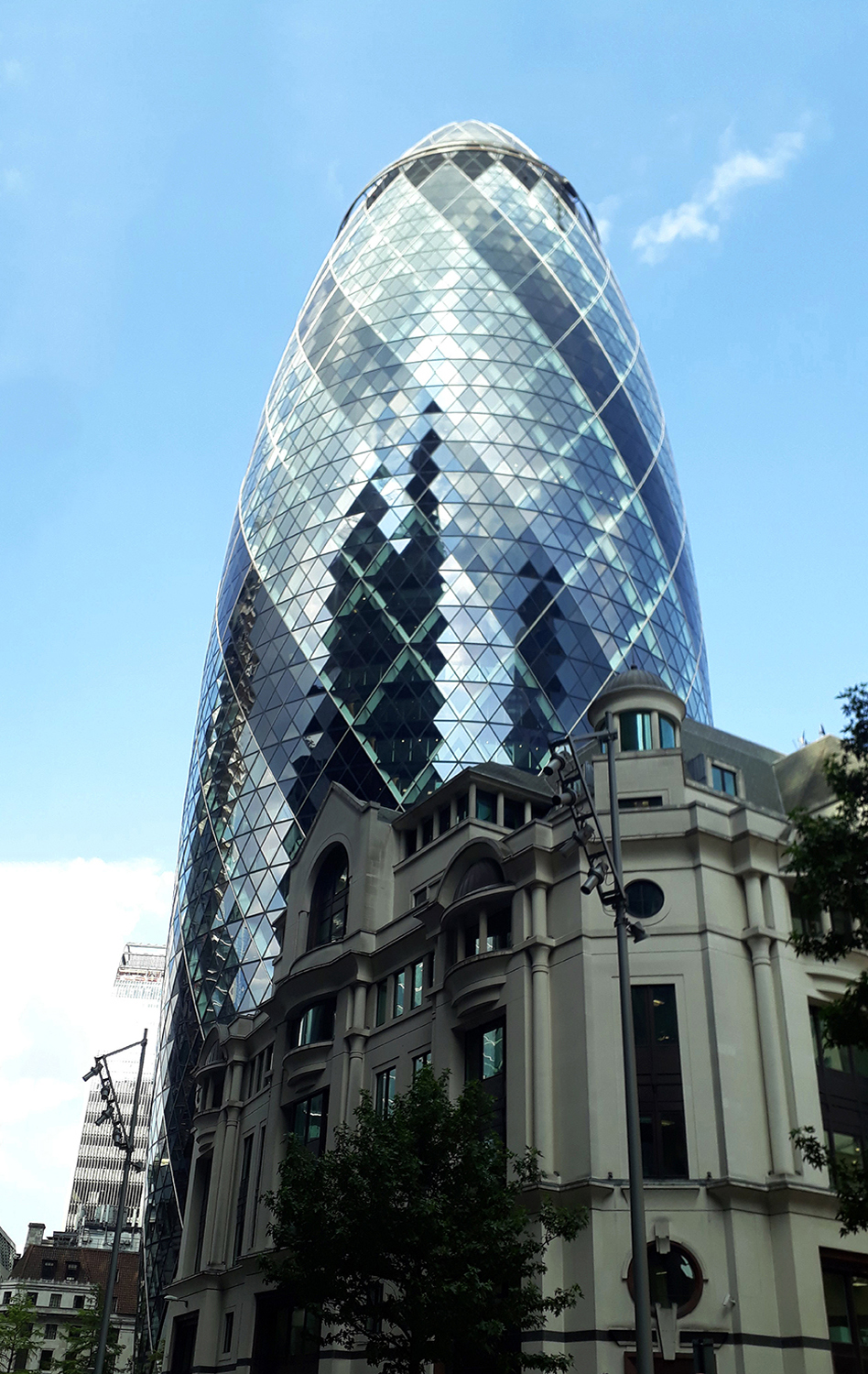
Gioia Sawaya
One example of how biomimicry can be applied on the organism level is the Gherkin tower in London by architect Norman Foster. The Gherkin’s hexagonal structure is inspired by the Venus flower basket sponge that has a lattice-like exoskeleton and round shape to help it disperse the stresses and forces it is confronted to underwater. Similar to the National Museum in Qatar by Jean Nouvel that borrowed from the properties of the desert rose to form the architecture of the museum, the Gherkin looked closely at the configuration of the Venus flower basket sponge, identified its particular characteristics and behavior, and applied them on the building in terms of form and function.
The study of biomimicry, also known as biomimetics, is multi-disciplinary and can be thus associated with various fields. Due to the significant number of natural components that can be emulated, new technologies, motivated by natural solutions, have emerged on both nano and macroscales. Biomimetic applications include cases at different stages of development: from prototypes to innovations that turned out to be economically viable. One genuine model that shows how nature can provide a wellspring of inspiration for advancement is an airplane. The design and technique of an airplane was clearly propelled by the movement of flying creatures such as birds and bats (Leonardo da Vinci’s Flying Machine and the Wright Brother’s First Prototype). Other models range from thermal collectors that were inspired by the fur of a polar bear, to solar energy that was born after observing the arrangement of leaves on a plant, better ceramics that were enlivened by studying the properties of seashells, and digital colors and displays that were motivated by the refractive properties of a butterfly’s wing.
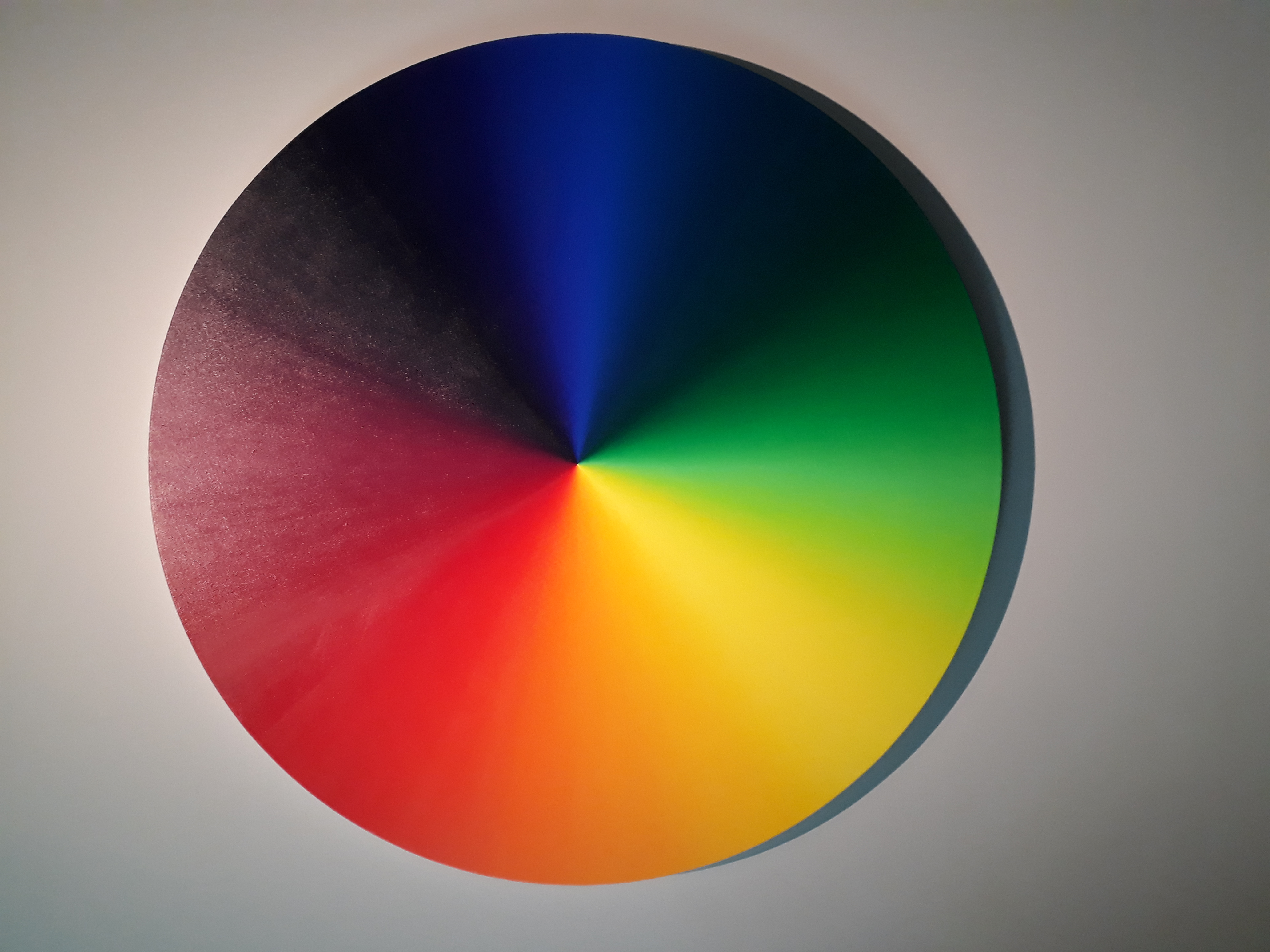
Gioia Sawaya
Olafur Eliasson’s Color Wheel displayed at Olafur Eliasson’s Showroom in Reykjavík
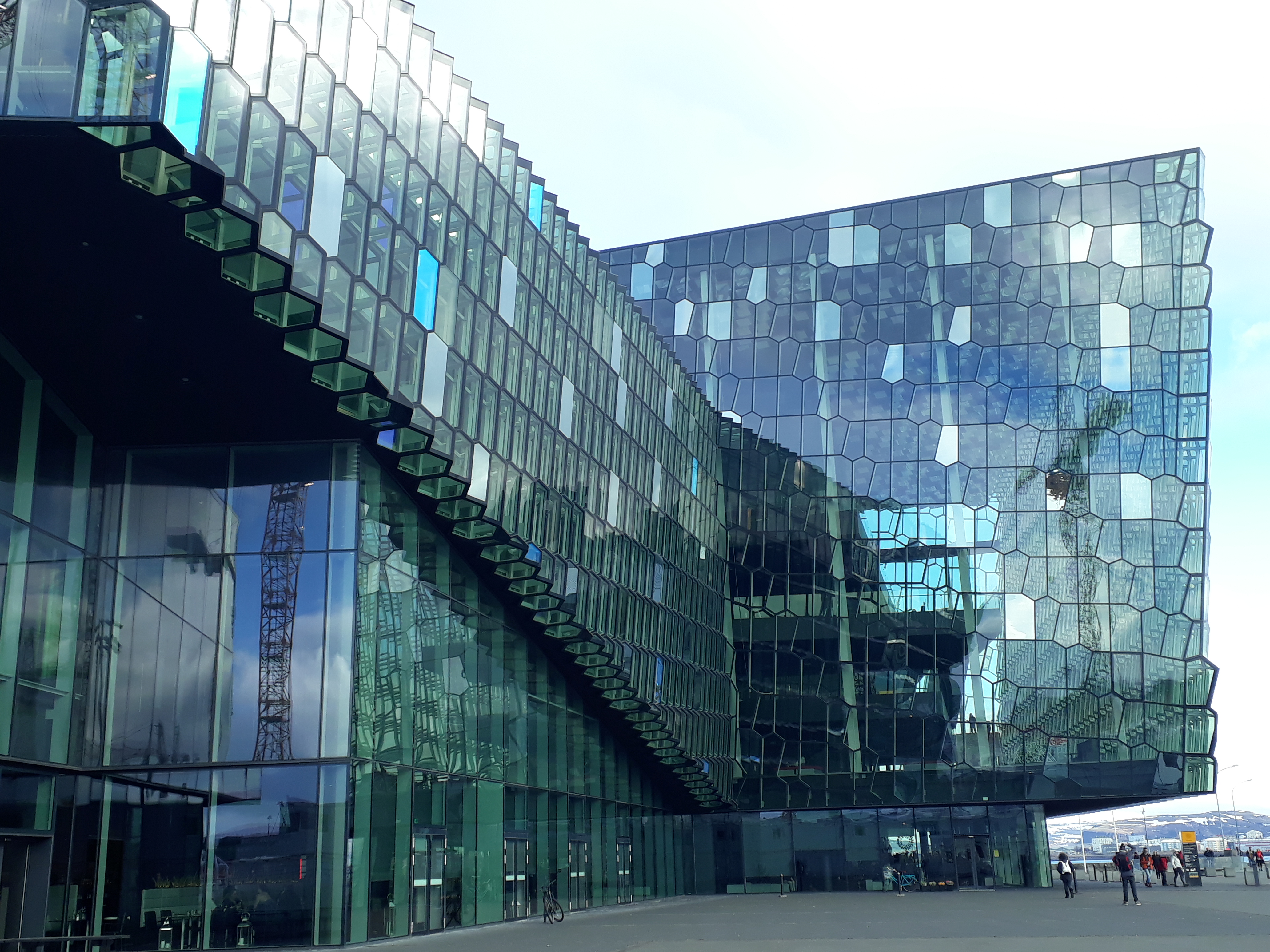
Gioia Sawaya
Inspired by Iceland’s changing light conditions, the façade of the Harpa Concert Hall in Reykjavík by Sudio Olafur Eliasson is made of dichromatic glass that consume and reflect the surrounding light.
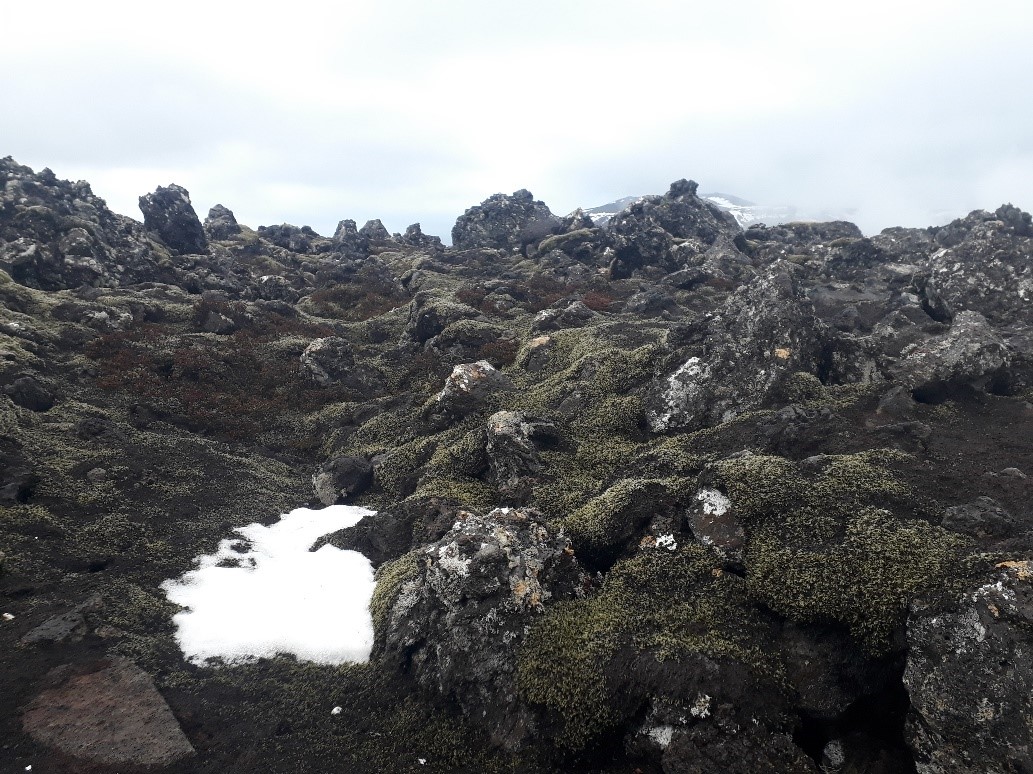
Gioia Sawaya
Additionally, Eliasson was inspired by the geological formations of the region's coastal basalt rock, the reason why the geometric surfaces of the concert hall are three-dimensional, constructed of twelve-sided crystalline panels.
Therefore, biomimicry, as defined by nature, looks at the ways in which living beings have developed into well-adapted organisms. It benefits from a wide source of speculations that has picked-up from a progressive 3.8-billion-year cycle of research. Life forms can be viewed as exemplifying innovations that are similar to those envisioned by human beings, and much of the time, have handled similar issues with unquestionable and unmistakable means. Humans, subsequently, gained from the best adapted natural living beings in their environment and emulated their form, behavior, and ecosystem as an approach for adaptation and finding solutions to their human problems.
“The architect of the future will be based on the imitation of nature, because it is the most rational, durable, and economic way of all methods.” Antoni Gaudí Biomorphism in architecture searches for answers in sustainability found in nature. By using life forms as a measure for ecological standards, biomorphism in architecture draws from nature as a source of inspiration, valuing it as something that humans can benefit from. Ever since the start of man-made environments until today, architecture seemed to be paying attention to what nature could teach. It has learned from the living organisms that inhabited the earth and populated the planet, because those organisms have shown stories of evolutionary success. It has profited from their specific properties, and has comprehended that innovations which are receptive to structural planning need not to resemble a plant or an animal; but their structure should be essential to the function of the organism. Those functions could be then extruded and utilized as helpful technologies.
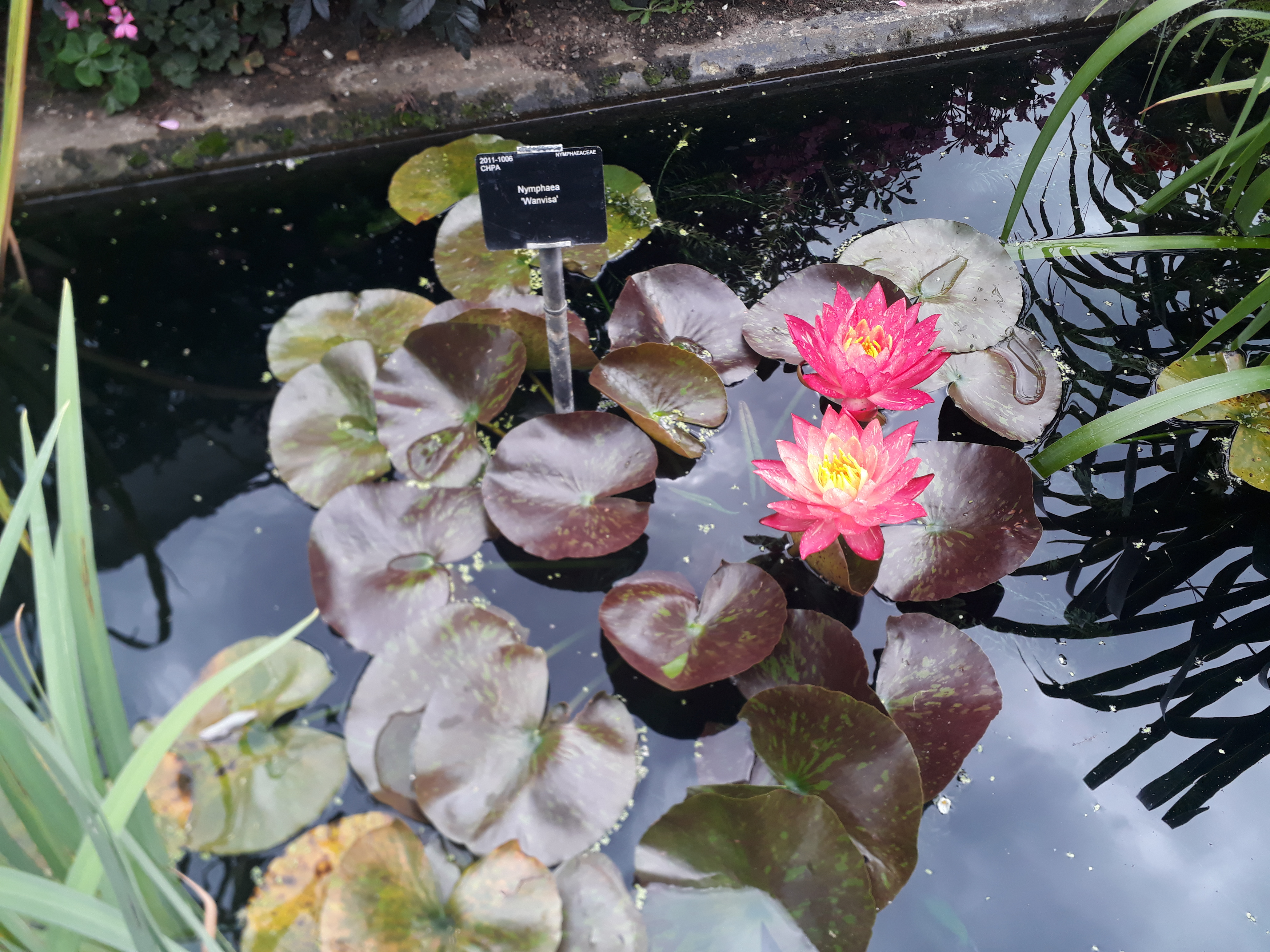
Gioia Sawaya
The Nymphaea "Wanvisa” inspired the floral shape of the Lotus building by Studio 505 that blooms today in Wujin, China. The Lotus building’s approach to biomimicry reflects its environmental sustainability. Geothermal piles are placed underneath the base of the man-made lake, and the body of water is used as a means of pre-cooling during summer and pre-warming during winter.
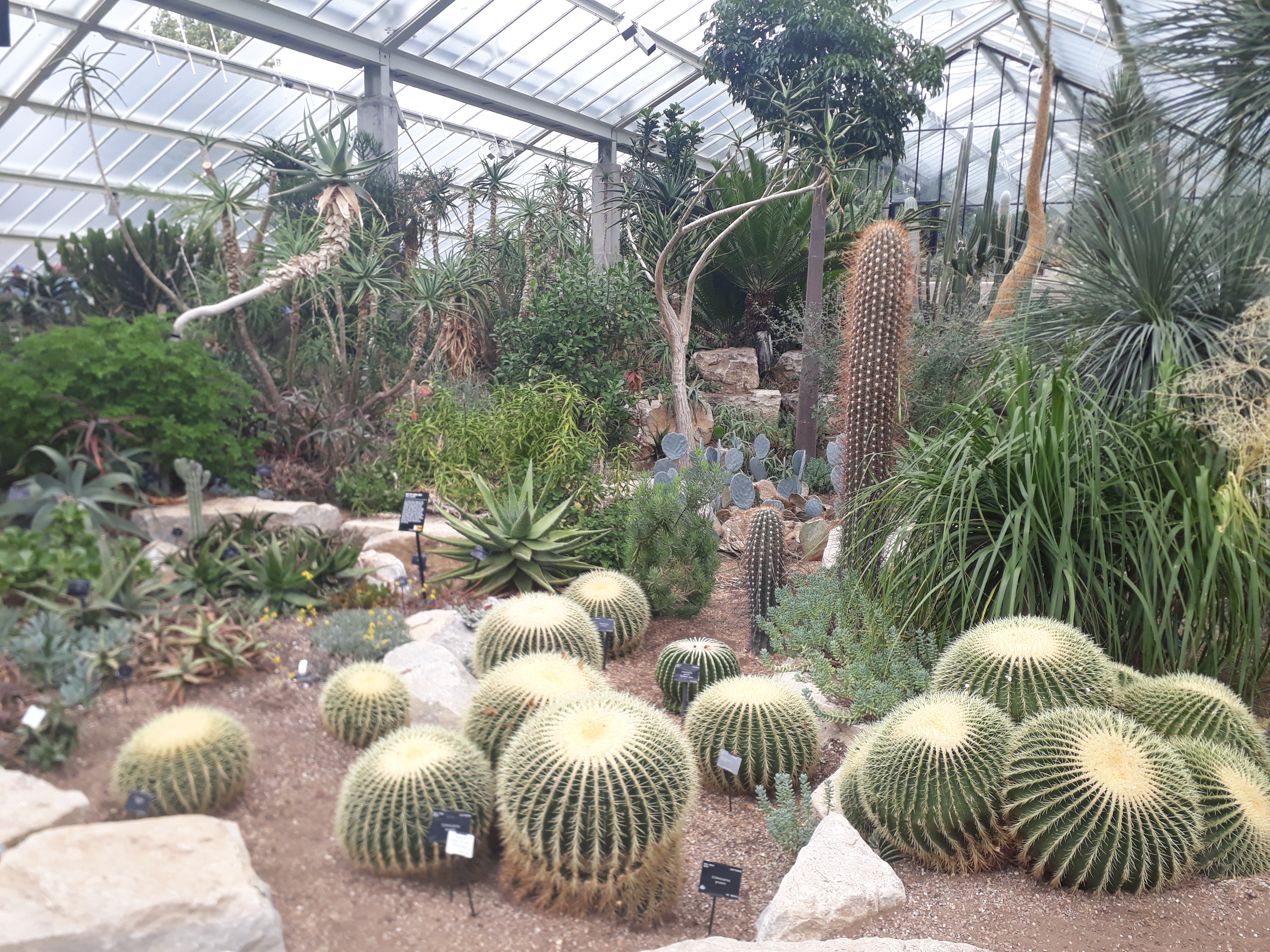
Gioia Sawaya
Cacti are plants that adapt to hot and dry climates. One of their special characteristics are the spines that encompass the entire plant. Those spines have a shading function, protecting the plant from intense sunlight and helping keep the internal temperature low enough to prevent the water already stored in it from evaporating. Aesthetics Architects looked for inspiration in the cactus as an organism and used it as a sustainable solution to design their MMAA tower in Qatar.

Gioia Sawaya
The Hive by Wolfgang Buttress and Dr. Martin Bencsik, Kew Gardens, London The Hive gives a glimpse into the life of bees. The hexagonal geometry of the pavilion is an abstraction of a honeycomb. In addition, the aluminum structure consists of a rotational twist that introduces a movement, suggestive of a swarm.

Gioia Sawaya
Vibration sensors feeding real -time signals are used to keep an activity record inside the void where visitors enter and algorithms help translate the bee colony vibrations into lighting effects that are responsive to the signals received.
“The natural world and ecological system are maybe the best picture for what a sustainable world looks and performs like. If our built environment can function like these ecosystems, maybe that is the pinnacle of what sustainable design can be.” Erin Rovalo Biomimicry aims to achieve resource efficiency and sustainability in their best form. Shifting from a non-renewable energy source economy to a sunlight based one is one example. Humans have achieved a ton of fascinating things, yet the measure of phenomenal alterations that have progressed in natural organisms gives human beings a picture of how much they still have ahead. Hence, biomimicry is always there, ready to enable them find solutions behind their problems, by providing them, through nature, with the answers they are looking for.
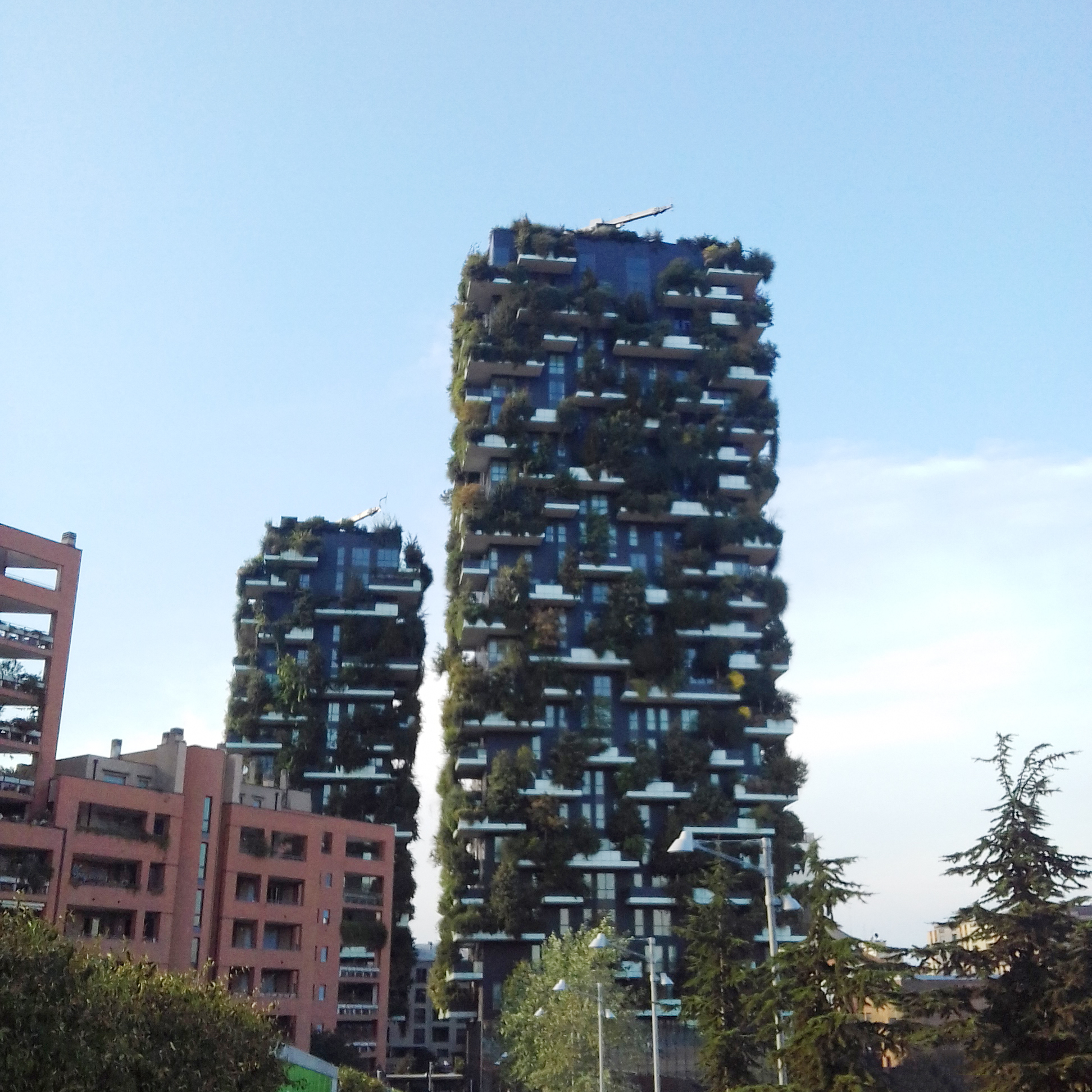
Gioia Sawaya
Vertical Forest by Stefano Boeri,Milano Vertical Forest is a model for a sustainable residential building developed by Italian architect Stefano Boeri in the city of Milan as a means to regenerate the environment, enhance the urban ecosystem, and help with metropolitan reforestation. Boeri’s ideas of sustainability continue to expand to shape the future of cities. His latest proposal is for a vertical forest city is in Cairo, Egypt where it is estimated that the plants used will not only provide natural shading and improve air quality, but will have the ability to absorb 7 tons of CO2 and produce 8 tons of O2 per year.